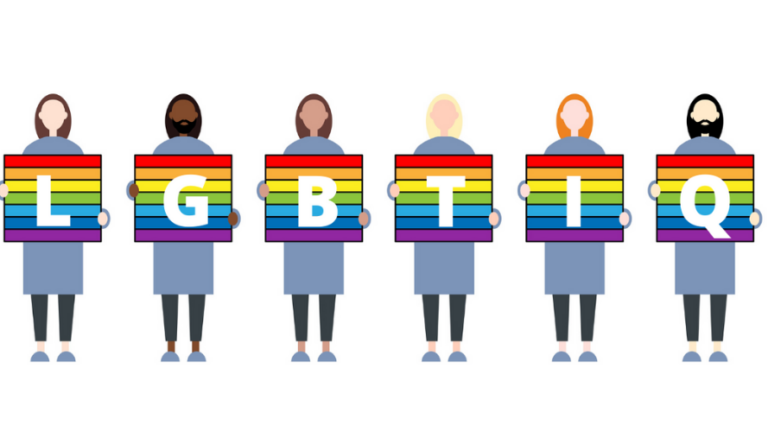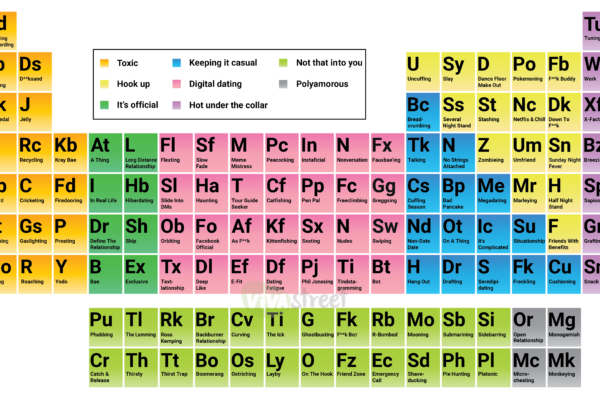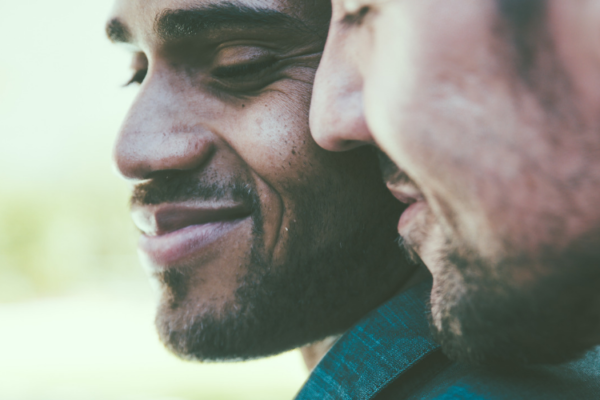When it comes to sexual orientation and indeed gender identity, the language used is ever-evolving. For those new to this topic, knowing this specific terminology may not be as simple as first thought.
Most of us want to be able to refer to a person using the right terminology, without causing any offence.
Neither do we want to rely on archaic and sometimes derogatory terms that are no longer considered acceptable in this day and age.
That’s why here at Vivastreet, we’ve aimed to offer a straightforward, easy-to-use guide to the many LGBTIQ+ acronyms used in 2021.
A Comprehensive List of LGBTIQ+ Vocabulary Definitions for 2021
Perhaps the best place to begin is with the basics and those that are the more commonly heard terms such as:
Agender: A person who exists without gender, having little or no personal alignment to any identity here. (Sometimes called genderless, gender-neutral or gender neutrois).
Ally: Allies are those identifying as straight and cisgender but believe in social and legal equality for all the community.
Androsexual: A person who is primarily emotionally/romantically/sexually attracted to masculinity, males, or men.
Asexual: Describes all different sexual orientations and gender identities and refers to an individual who doesn’t experience sexual desire or perhaps have a lower level of it. (Sometimes called ACE).
Bi-curious: Those experiencing a curious attraction to people of the same sex/gender.
Binding: The process of reducing or altering the appearance of breast size. Often used as a means of gender expression or as a way of changing how a person’s sexual characteristics are perceived.
Biphobia: Negative attitudes and behaviour displayed between those identifying as bisexual. This can come from both in and out of the LGBTIQ+ community.
Bisexual: Once used solely as a man or woman sexually/emotionally attracted to more than one gender. However recently, with many more genders recognised, the definition of bisexuality now extends to two or more genders.
Cisgender: A person with a gender identity matching the sex they were assigned at birth.
Closeted: An individual not yet open about their gender identity or sexuality with themselves or with others.
Constellation: Describes the structure or arrangement of a polyamorous relationship.
Demisexual: Those who need to form an emotional bond to experience a sexual attraction. (Sometimes called Demi)
Down-low: Refers to men identifying as straight but secretly having sex with other men.
Drag Queen: A person (male or female) who adopts a persona through costume and performs in front of an audience (singer, comedian, etc). It is important to realise that there is a clear distinction between performing in drag and living your life as trans.
Dyke: Though once derogative, some gay women and lesbians positively welcome this term, suggesting a masculine-presenting lesbian.
Faggot: Another once derogative term for a gay or queer person, some gay people are reclaiming this as a more positive in-group term (sometimes called fag).
Gay: A man sexually/emotionally attracted to other men.
Gender Fluid: Individuals with a shifting or fluctuating identity.
Gender Non-Conforming (GNC): Someone who expresses their gender that is outside of those norms traditionally associated with masculinity or femininity.
Heterosexism: Describes behaviour that suggests heterosexuality is the better lifestyle as opposed to other sexuality types. In recent years, the acronym LGBT has further expanded, initially introducing the letter Q, then developing even further:
Intersex: Those not typically identifying as male or female regarding their biological traits. The person is born with reproductive or sexual anatomy that does not fit the typical definitions of female or male.
For example, a person may be born with genitals that are both male or female types.
For instance, a person could be born with genetic mosaicism which would mean their cells would have both XX chromosomes and XY chromosomes.
There can also be more variations of sexual anatomy that count as intersex.
Lesbian: A woman sexually/emotionally attracted to other women.
LGBT: In its shortest and simplest form, this is Lesbian, Gay, Bisexual, Transgender.
LGBTQIA: Lesbian, Gay, Bisexual, Transgender, Queer (and/or Questioning) Intersex and Asexual (and/or Ally).
Lipstick Lesbian: Whether in a derogative or positive way, this is a term that refers to a lesbian displaying feminine gender expression. Sometimes, it defines a lesbian that passes for or is assumed to be straight.
Metrosexual: Is a term used to describe a man who is especially meticulous about his grooming habits, choosing to invest spend time and money into their appearance.
Mx: A gender-neutral choice for those who don’t identify within the gender binary. This replaces that traditional Miss., Ms., Mrs., and Mr.
Non-Binary: A person who sees themselves outside of the gender binary, and therefore doesn’t identify as either male or female.
Outing: The act of disclosing a person’s sexual orientation, gender identity, or intersex status without their consent.
Pansexual: Describes people sexually/romantically/emotionally attached to others regardless of sex or gender identity. (Sometimes called Pan).
Preferred Gender Pronouns (PGPs): PGPs are becoming common practice when introducing someone. Once again, as with most evolving language, many suggest removing the preferred element here thus taking away the flexibility when deciding on the pronoun to use.
Queer: At one time, the term queer was considered a slur in the community. Now though, it has been reclaimed. In a sense, it’s a type of label rejection. But it’s typically used to refer to a person who is not straight and not cisgender.
Questioning: For those not sure how they identify and currently questioning their sexual orientation or perhaps their gender identity.
Sexual Fluidity: Describes the changes in sexuality or sexual identity. Sexual preferences are not fixed and can change over time. Just like other social traits, like attitudes and behaviours, a person’s sexual preference can also be flexible and evolve over time.
Stealth: A term describing a trans person perceived or known by others as cisgender but who is not out as trans.
Transgender: Someone with a gender identity or expression, which is not that of the sex they were assigned at birth.
Transitioning: A transgender person’s process of changing aspects of their physical self as well as names and pronouns, moving to their preferred gender.
Transsexual: A person identifying with a gender or sex different from the one that they were born with. This can mean physically as well through hormones and surgery.
Transvestite: A person, also called a cross-dresser, who dresses as the opposite gender, whether for fun, relaxation or for sexual gratification.
This term is not to be confused with that of transsexual – as the person does not identify as the gender they cross-dress as. It’s also important to realise that people who identify as heterosexual, also cross-dress too.
Two-spirit: A term commonly used amongst the native American community to refer to individuals possessing qualities of both masculine and feminine genders.
Ze / Zir: Gender-neutral alternate pronouns that many trans people prefer. These replace standard he, she, his and her. However, some also favour a more plural pronoun of they or their instead.
Final Words on LGBTIQ+ Acronyms
Though it may seem like a lot to take in, it’s worth noting that such terms are simply the ways people are choosing to define or describe themselves.
Furthermore, as our everyday language continues to evolve over time, so too is gender identity and relevant terms for sexual orientation. So make sure you’re on top of the terms in use today.





